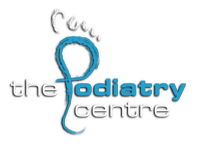Turf Toe
In my years of sports experience, sprains of the big toe joint, a condition commonly referred to as ‘turf toe’, was one of the more commonly occurring injuries among my team mates. Though most sports men and women simply attempt to ‘run it off’ the injury is one that can potentially become quite painful and debilitating which can affect both sporting performance and quality of life. In this blog I will present some information about what ‘turf toe’ is and how it can be addressed.
What is turf toe?
As previously mentioned, turf toe is an injury to the big toe joint which may or may not include a sprain injury. The injury often occurs when the toe is bent upward excessively (hyperextended) thus damaging the joint itself. The injury can occur on basically any playing surface but has a tendency to occur more frequently on artificial playing fields. The condition can be caused by direct injury such as jamming the toe or forced hyperextension as a result of pressure on the players calf. Sports that are often associated with an increased risk of turf toe includes; football, soccer, hockey, gymnastics, dance and certain athletics events.
What are some symptoms of turf toe?
The symptoms of turf toe are typically similar to the symptoms of any other joint sprains. Joint tenderness, swelling, heat and limited range of motion are all common place in this injury. Due to the repetitive traumatic nature of the injury, most sufferers will report a steady onset of discomfort that will worsen with ongoing weight bearing. Depending on the level of injury, there may be palpable discomfort over the surface of the first metatarsal bone.
How is turf toe diagnosed?
Turf toe can be diagnosed using a mixture of physical examination, advanced imaging such as x –rays, ultrasounds and the assessment of the patient’s injury history. The physical examination assesses loss of motion as well as the level of pain during range of motion and various exercises. X-ray assessment are obtained to rule out any fractures whilst ultrasound assessments are used to isolate fluid and inflammation around the joint capsules and tendons.
How is turf toe treated?
The first line of treatment for turf toe follows the basic treatment for sprains and strains which is according to the RICE principle (Rest, Ice, Compression, Elevation). This method is usually sufficient to reduce discomfort and enable the athlete to heal quicker and return to sport more promptly. Other methods that can be utilised include:
* Anti-inflammatory medications such as ibuprofen and paracetamol for pain control.
* Strapping, splinting or bracing of the toe to reduce the chances of further aggravation of the injury.
* Immobilisation of the foot using a boot or crutches/casts (for worse conditions).
* Update of footwear to more supportive and sports appropriate styles. Supportive shoes that prevent hyperextension of the toes are optimal choices.
* Retraining and strengthening of muscles, ligaments and associated structures.
* Corrective orthotics and padding.
* Surgery for the correction of very serious forms of injury.
Prognosis is generally good and recovery can take between 4 to 6 weeks with a return to pain free range of motion and physical activity the ultimate goal alongside reduce chances of injury recurrence.
Podiatrists are foot and lower limb specialists trained in the diagnosis, treatment and management of many conditions including turf-toe. If you or anyone you now if suffering from the symptoms of turf-toe, contact us at The Podiatry Centre as we can help restore you back to pain free activity.
Dr Anel Kapur (Podiatrist)
